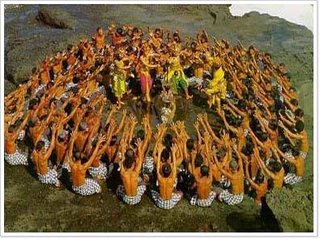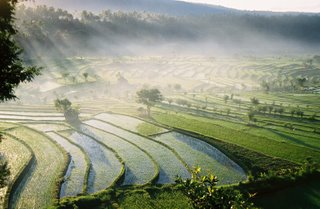
Bali is famous for dance, as well as painting, scuplture, and woodcarving. Balinese gamelan music is highly developed and varied. The dances portray stories from Hindu Epics such as Ramayana. Famous Balinese dances include Pendet, Legong,Baris,Topeng,Barong, and Kecak
National education programs, mass media and tourism continue to change Balinese culture. Immigration from other parts of Indonesia, mainly Java) is changing the composition of Bali's population.
The culture of Bali is unique. People say that the Balinese People have reached self-content. It is not an exaggeration that when a Balinese is asked what heaven is like, he would say, just like Bali, without the worries of mundane life. They want to live in Bali, to be cremated in Bali when they die, and to reincarnate in Bali.
It does not mean that the Balinese resist changes. Instead, they adapt them to their own system. This goes back far in history. Prior to the arrival of Hinduism in Bali and in other parts of Indonesia, people practised animism. When Hinduism arrives, the practice of Hinduism is adapted to local practices. The brand of Hinduism practised in Bali is much different from that in India. Other aspects of life flow this
 way.
way.Traditional paintings, faithfully depicting religious and mythological symbolisms, met with Western and modern paintings, giving birth to contemporary paintings, free in its creative topics yet strongly and distinctively Balinese. Its dance, its music, and its wayang theaters , while have been continually enriched by contemporary and external artistry, are still laden with religious connotations, performed mostly to appease and to please the gods and the goddesses. Wood and stone carvings, gold and silver crafts parallel the development of paintings, gracefully evolving with external forces to enhance their characters. The Batik of Bali owes its origin to Java, and inspired the development of Ikat and Double Ikat.

